Story and photos by Brandes Elitch
The history of the “Contest of Elegance” dates back to 17th century France, when aristocrats paraded their horse-drawn carriages in Parisian parks during summer weekends and holidays. Today the oldest Concours is the Concorso d’Eleganza Villa d’Este, first held in 1929. The first Concours in North America was in 1950 at Pebble Beach.
There were numerous Concours in France between the wars, but back then the idea of elegance encompassed more than just the car. It typically involved a woman and her clothes, her jewelry, her hairstyle, her accessories (hat, purse, scarf, shoes), and most importantly, the dog. Of course, during this period many of the most beautiful cars ever made were produced in France, some of which can fortunately be seen at the Pebble Beach Concours every year.
The Pebble Beach Concours is not only the most famous one in the US, it is the most famous one in the world for historically correct and significant automobiles, and it is likely to remain so for the foreseeable future. It is a triumph of organization, carried out with military precision. Someone once said, “Greatness results partially from what we call “Inspiration,” but it is achieved by consistent, relentless effort.” That is certainly the case here. Let’s take a look behind the curtain to see how it all works, because it is a great story.
First, we should acknowledge that the Pebble Beach community includes 3 resorts, 4 golf courses, and the famous Seventeen Mile Drive. The scenery is spectacular, which is why more than 1.5 million visitors take the drive every year! It is an ideal setting for a show. We can quote an old golf saying, “Drive for show,” (although the real saying is “Drive for show, putt for dough.”) And there is plenty of dough in Pebble Beach.
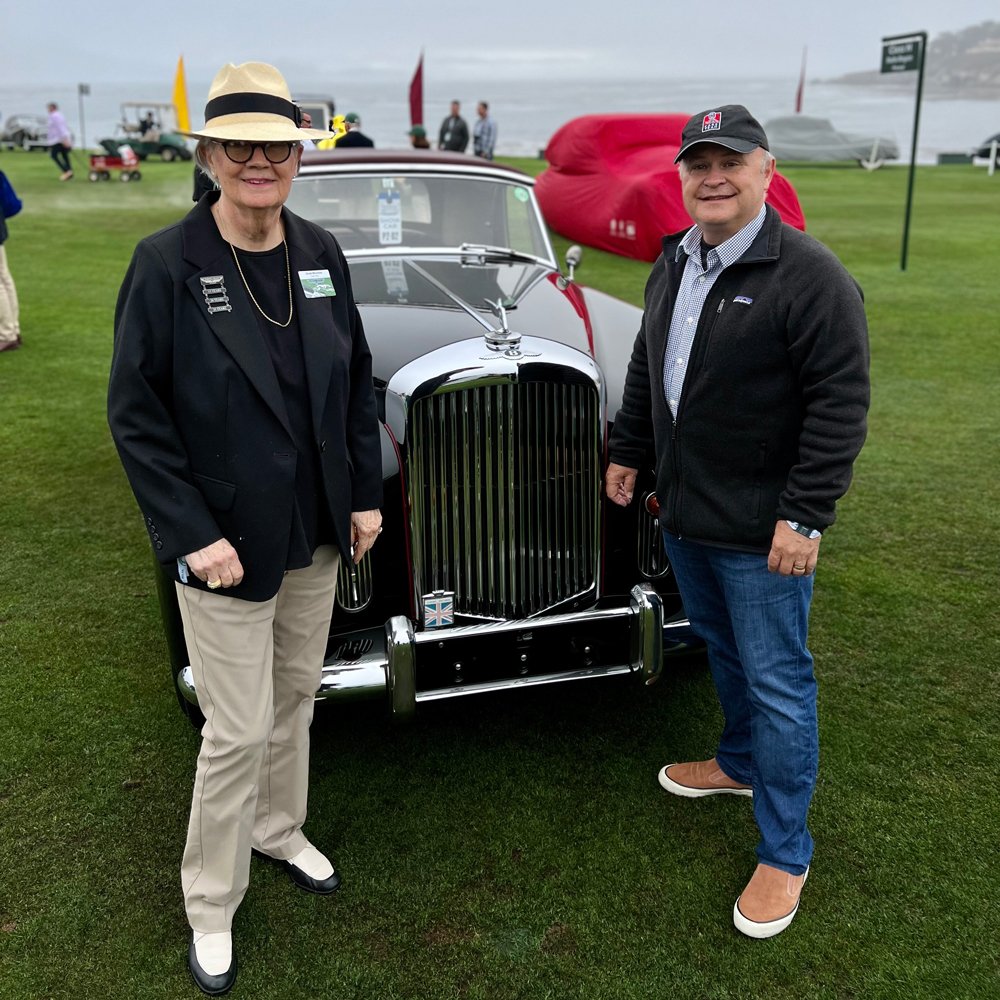
Among many interesting people at the show, here are two of the most interesting. Diane Brandon has not only been a Judge at Pebble Beach for 30 years (judging Rolls Royce and Bentley) but I suspect that she has, with rare exceptions, been the only woman judge. This year she could not judge because she was showing this Graber Bentley for the owner, who lives outside of the US and could not attend. What a grand and gracious gesture by Diane, and it must have been a bit stressful too. Next to Diane is Mark Greene, the host of CarsYeah, which is, or should be, familiar to all our readers. Mark hosts a 5 day a week podcast at carsyeah.com, recognized as one of the top car podcasts and is in the top 1% of podcasts based on unique downloads! He has done over 2100 interviews, including Pete Vack and myself. This is beyond impressive, as is Diane’s contribution over the last 30 years.
Each year’s show, now the 71st, is planned years in advance. The first order of business is to decide on the honored categories. This year they were:
-Le Mans racecars, divided into 2 categories: up to 1962 and 1962-2020. There were 29 cars on display and 14 of the 29 were winners.
-McFarlan (sometimes called “the American Rolls Royce)
-Centennial of Lincoln
-Talbot Lago Grand Sport (36 total production)
-Alfa Romeo 8C 2300
-FIAT Otto Vu
-Graber coachwork 1925-1970
-Unorthodox Propulsion
Everything starts with the Selection Committee, which meets in March for 3 days to review applicants and finalize the class entries. This is a group of around a dozen experts who choose the cars invited to participate in the featured classes. Here, you first must be invited to apply. Keep in mind that there are perhaps 1000 cars applying for 200 spots. While invited applicants are perhaps close to the number of spots, there are hundreds more who contact the show on their own to apply. The official acceptance and rejection letters are mailed in April. This year the cars came from 21 countries and 32 states, and there were 29 classes.
Chief Judge Chris Bock says that the committee members “want to make sure that the cars are what they present themselves to be and that they’re authentic and original.” The selection of an individual car might require hours of research, reviewing supporting evidence and documentation provided by the owner and restoration shop.
When the car is judged on the field, cars are evaluated in their classes, perhaps 8 or 9 cars in a class. In addition, there are the technical judges who are specialists in a particular marque, model, and year of production. There are about a hundred of these technical judges. There are also about 50 honorary judges, but they are not judging mechanical components. Points are deducted for over restoration, inaccuracy, and “imperfections.” Points are given for “presence,” beauty, style, and even color. Cars are judged for accuracy of restoration or preservation integrity. Mechanically, everything has to work. The scoring is adapted from one used by the Classic Car Club of America, which totals 100 points. However, the judges can award up to 3 additional points for special factors, such as elegance, presence and historical significance, thus a perfect score is 103 points. This is important when there is more than one car that scores 100 points, and yes, it has happened.
The cars that pass the technical judging and win first place in their class are invited to the Winner’s Circle. The judges tour the Winner’s Circle and cast their ballots. The stress and excitement at that point reach a fever pitch.
My favorite comment is by Chief Judge Chris Bock: “It’s easy to get caught up in the details, but sometimes we forget to step back and just look at the car. At some point, beauty has to trump a sluggish windshield wiper.”
A bit of background here. The Selection Committee this year consists of 16 people. The Volunteer Executive Committee has 14 categories. There are 81 corporate sponsors. On the putting green in front of the Lodge, there are 18 concept cars. There are 28 entry classes. There are 22 judging teams. There are fully 29 awards and trophy categories. It is a bit overwhelming.
The categories this year were quite extraordinary. From my somewhat biased perspective, I would say that the Alfa 8C 2300 (and 6 C too) would have to rank as one of the Top Ten automobile designs in history, period.
Of course, the centenary of Le Mans, the most famous race in the world, is quite spectacular, even if the real centenary is actually next year. This is really a mandatory class selection.
The history of Lincoln has in my opinion been neglected relative to some of its peers, and it is high time for Lincoln to be in the spotlight.
The FIAT 8V and the Talbot Lago are among the most desirable cars ever, but perhaps not so well known in the US. I remember going all over Northern Italy with the late Chris Dickel to get trim parts, including a whole dashboard, for his 8V. What a wonderful time that was. Mere words cannot describe the beauty of the Talbot Lago selection here. It takes your breath away. There are 28 cars known out of the original production of 36 cars.
I must congratulate the committee on the Unorthodox Propulsion category, where I got to see in person cars I had only read about for many years.
When all was said and done, the Best of Show award went to a 1932 Duesenberg Model J Sports Torpedo, with a body by Figoni! Interestingly, this is the first time since 2013 when an American car was chosen for Best in Show. Amazingly, sometime in the 1960’s the body and chassis of this car were separated and sold to two different owners (!). The current owner was able to acquire both cars and provide a perfect and historically correct restoration, which took 3 years. This is such an astounding backstory it undoubtedly played a role in the judge’s choice.
I would add that there are so many fascinating cars on display that after the first few hours, you get an emotional and sensory overload. At least I did. But of course, you would not want to miss it next year, not for all the world.
We should acknowledge that the show has raised over $35 million for charity. Driving around the Monterey Peninsula, you might conclude that everyone is wealthy, but this is decidedly not the case. The County has an overall poverty rate of around 14%. According to the county Food Bank, Monterey County is the childhood poverty capital of California, with a child poverty rate of 30.3%. We must acknowledge the tremendous contribution that the Pebble Beach show has made directly, and indirectly, with over $67 million spent locally during the 2019 Car Week. The Foundation supports more than 90 local charities, and impacts the lives of 10,000 local children annually.
Talbot Lago Grand Sport Class
The information about the Grand Sport Talbot Lagos below was obtained from the standard work on the subject, Talbot Lago Grand Sport Volumes I and II, by Peter M. Larsen and Ben Erickson, published by Dalton Watson. The captions are composed by the Editor.
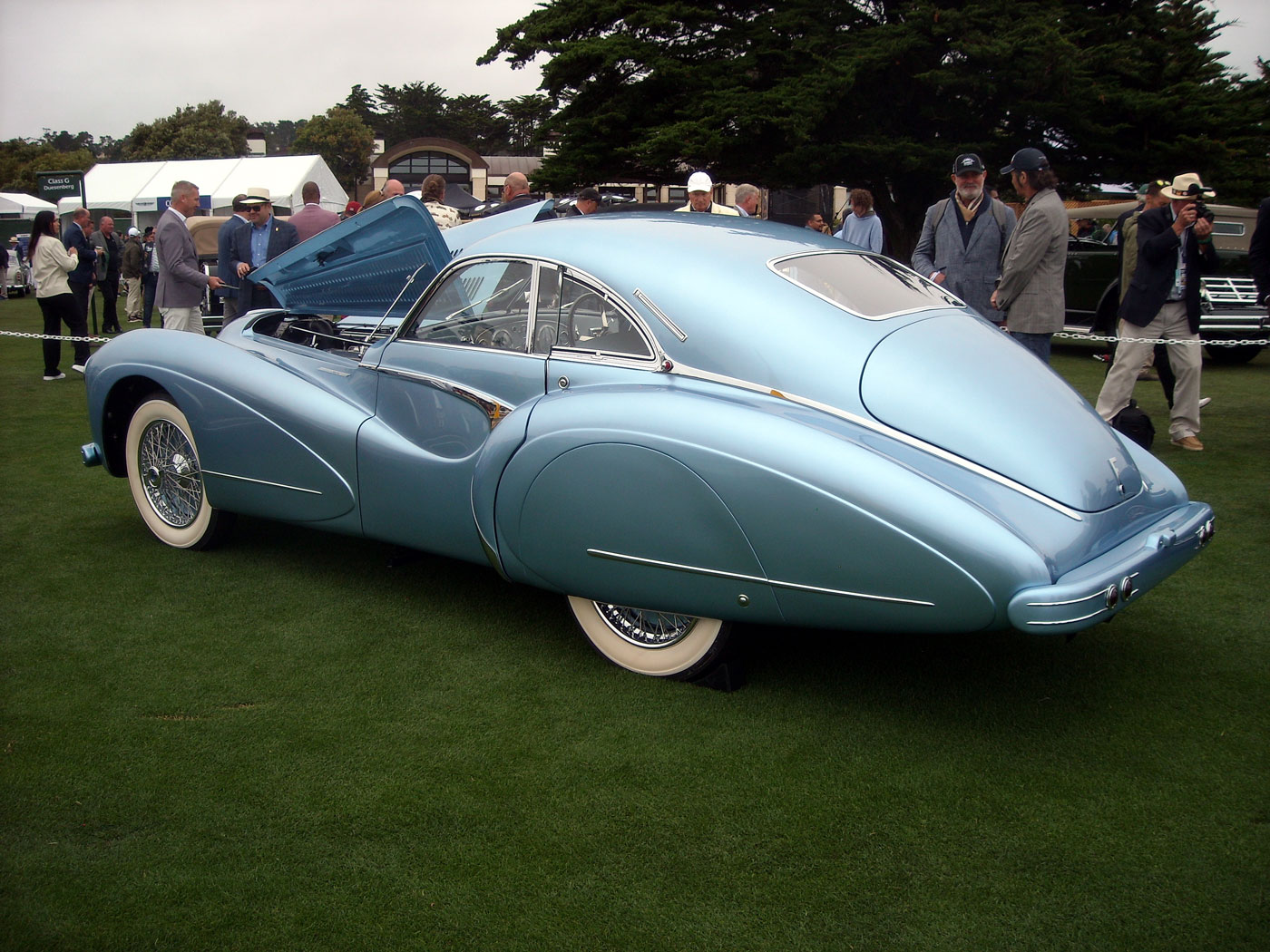
110114 1948 Saoutchik fastback coupe, Cussler family, Arvada, CO. Note that the numbers associated with each car are not chassis numbers. Clive Cussler bought this car from Jackson Brooks for $32,500 in 1978 after a total restoration.
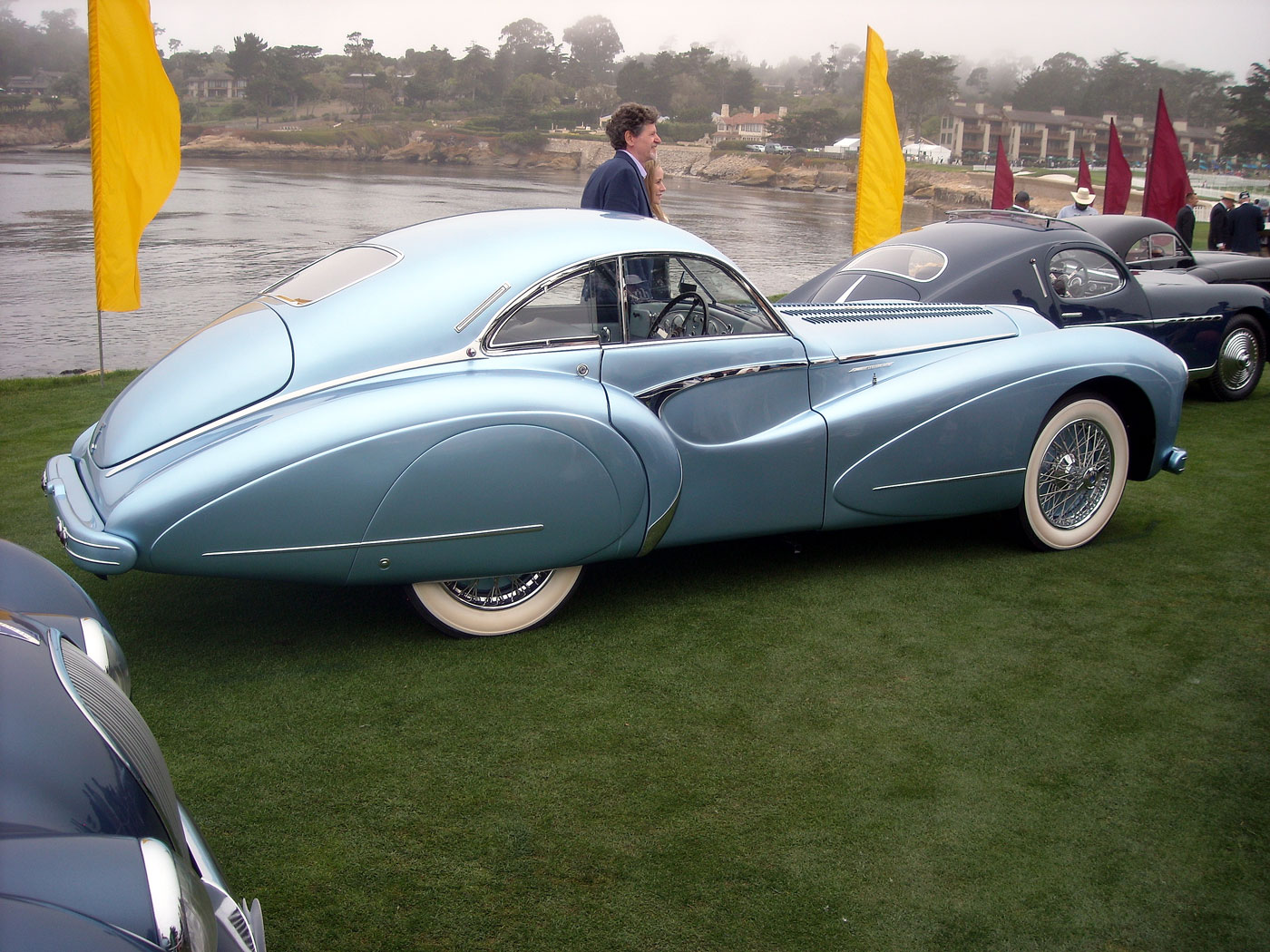
But for us this superb Saoutchik will always be remembered as the car that longtime VeloceToday reader Jim Bandy purchased in the early 1960s and drove while serving in France. He traded a 1954 Buick for the Talbot.
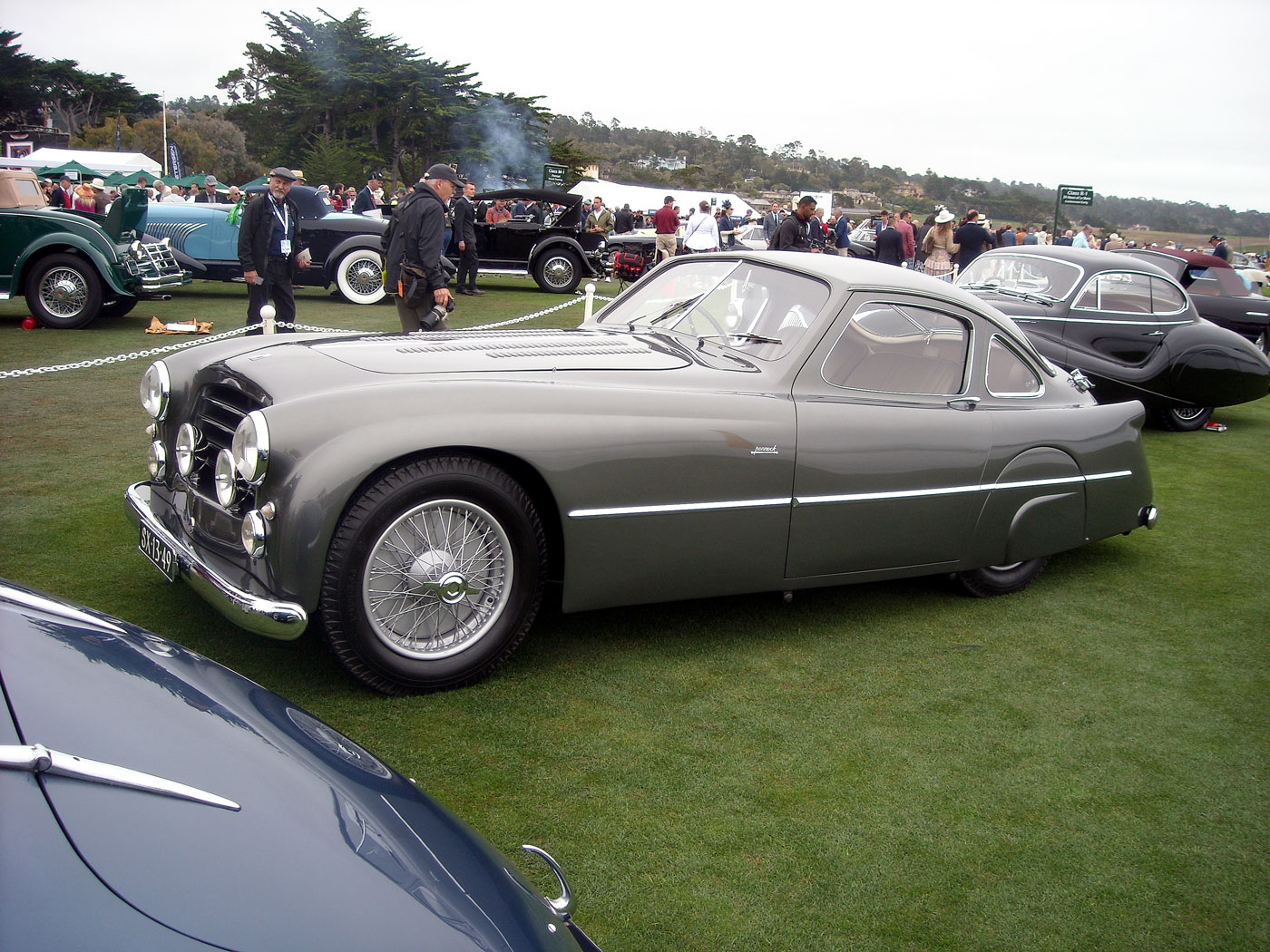
110124 1950 Pennock coupe, Steve & Marilee Hamilton. Ashes to Ashes. Not the car, but when previous owner, collector Vojta Mashek died, he requested that his ashes be scattered over the cars in his collection, one being this low mileage Pennock bodied coupe.
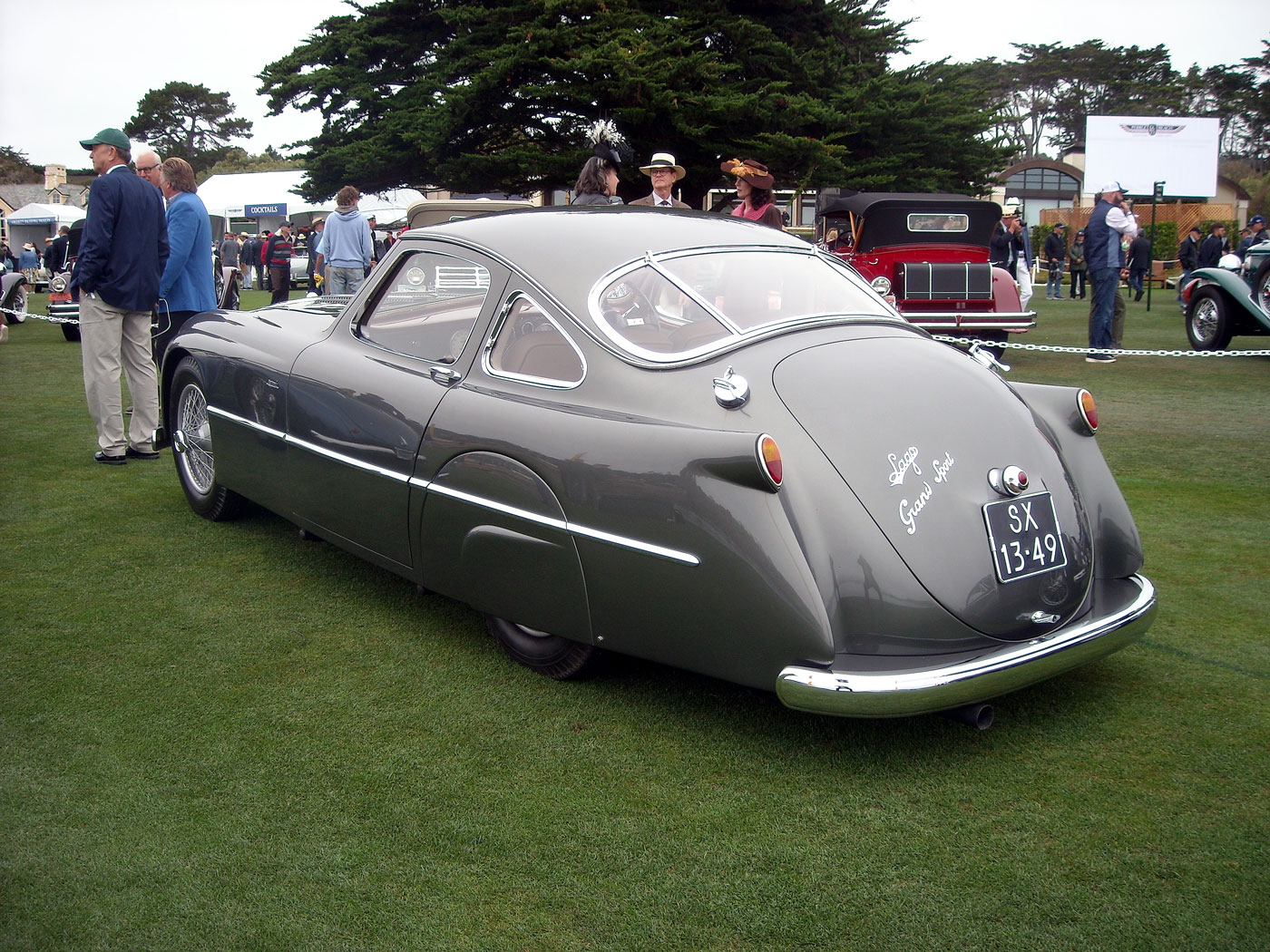
That Mashek’s ashes might be somewhere in the car did not deter Steve Hamilton to embark on major restoration in 2012. The styling might be considered a bit controversial.
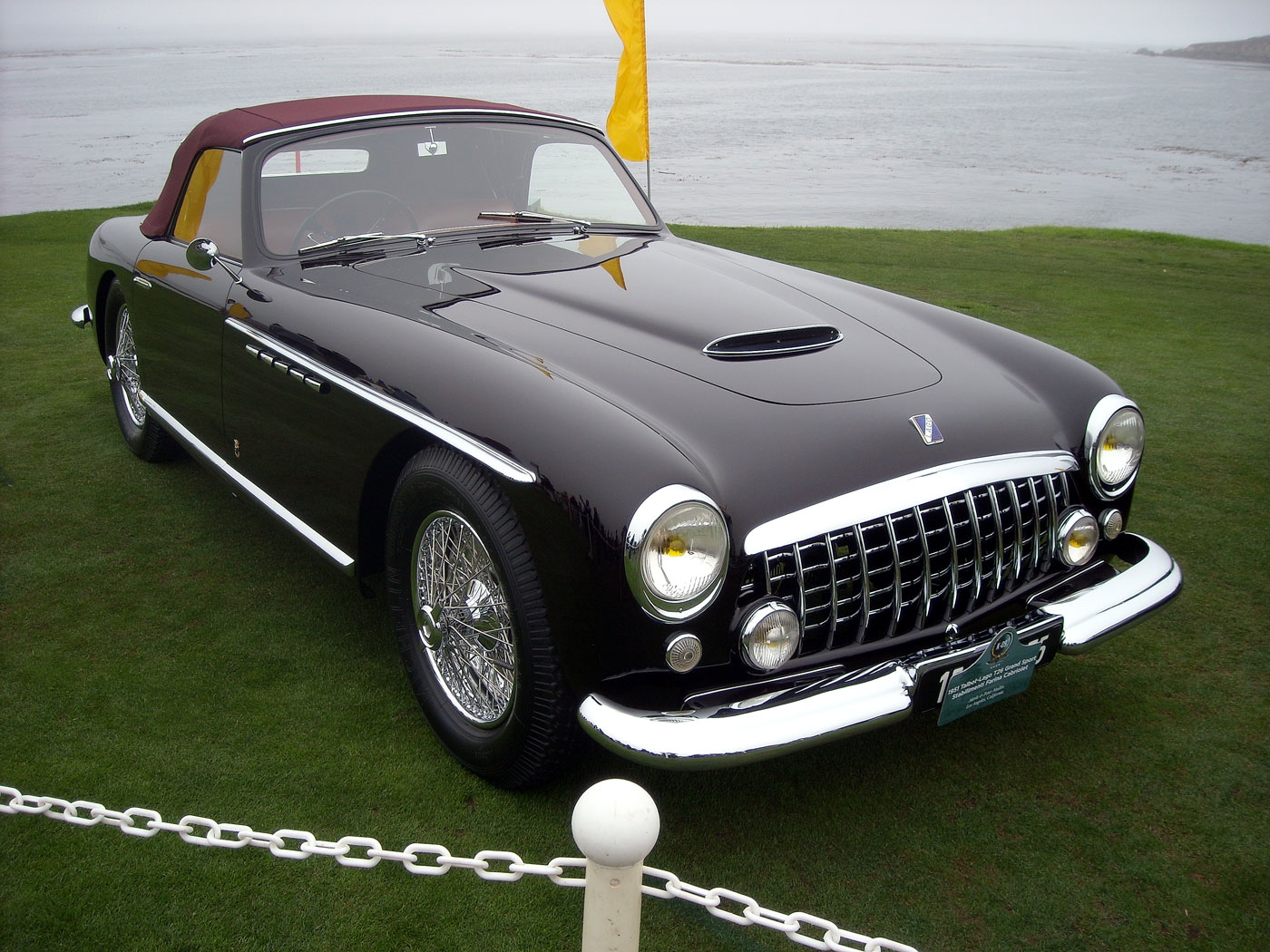
110160 1951 Stablimenti Farina cabriolet, Merle & Peter Mullin, Los Angeles. Brandes Elitch has written on the beauty of Italian cars. 110160 was the only GS to receive Italian coachwork as its first body and is perhaps one of the most beautiful of the lot. That said, Farina might have been influenced by a design by Philippe Charbonneaux for the Delahaye 235.
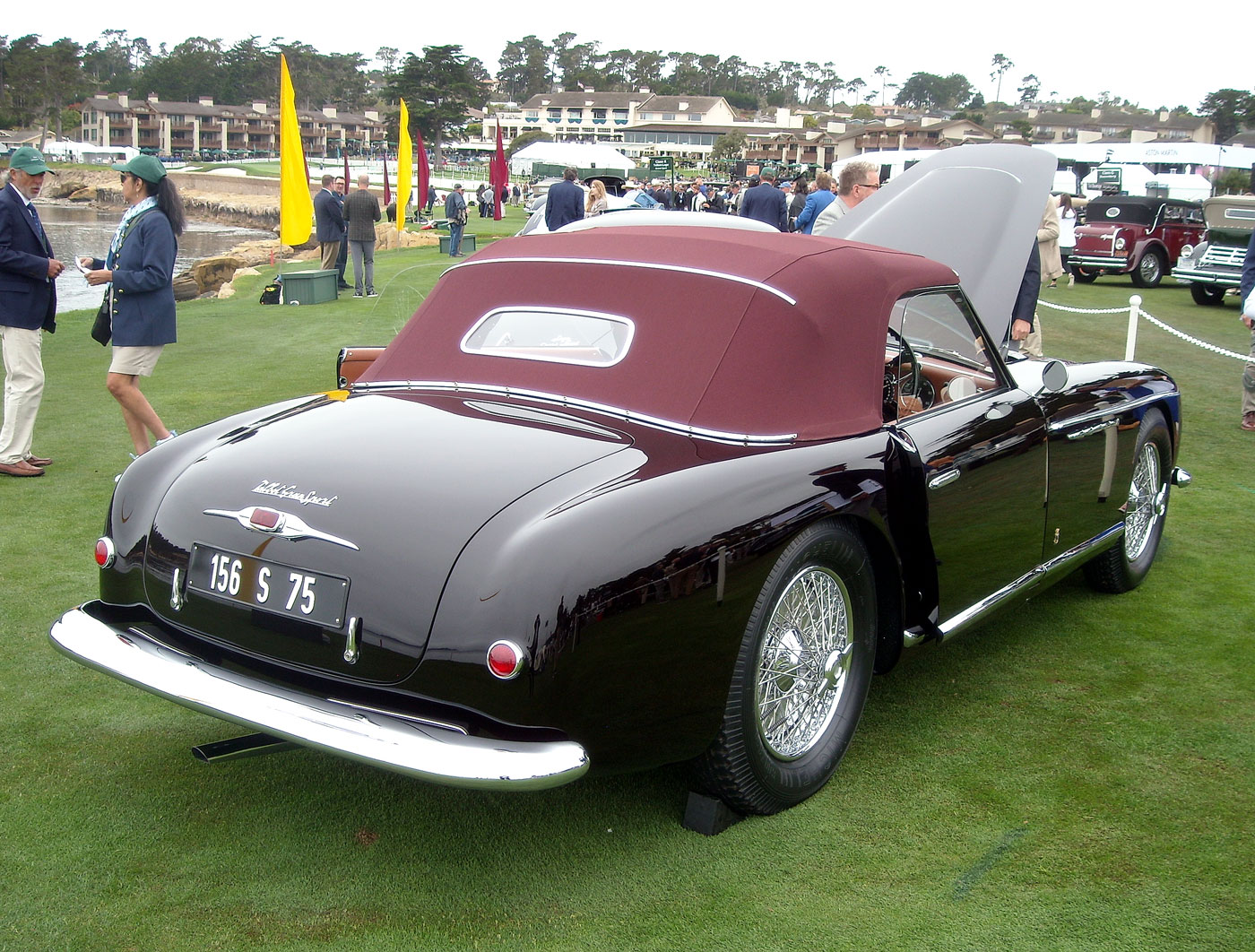
Peter Mullin had the car restored in 2010. The original eggshell white paint was changed to a red so dark it could be black. It may have been painted in that color to impress the judges, but in this case the original white paint made the car look a good deal better.
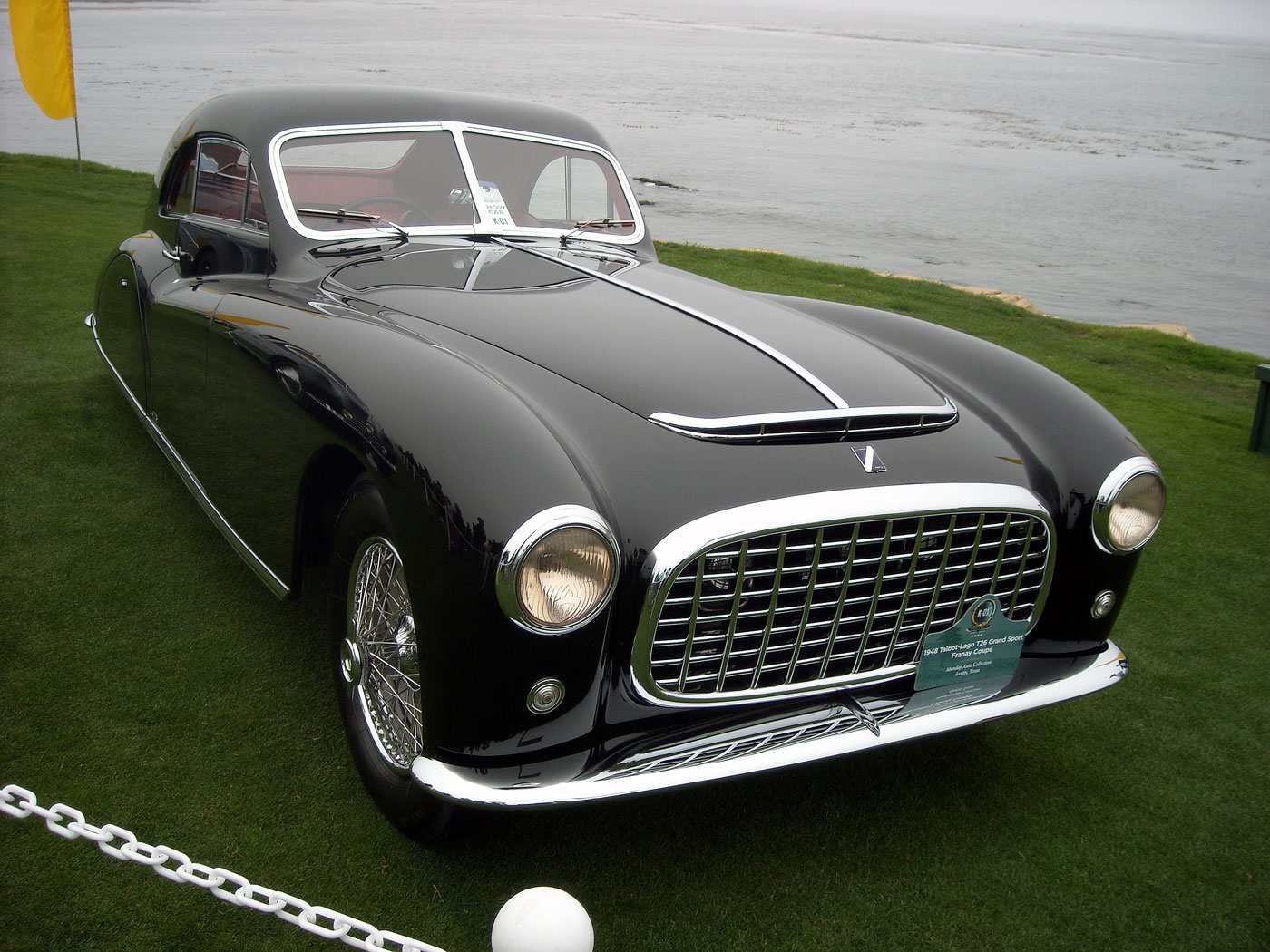
110113 1948 Franay coupe, Munday Auto Collection, Austin TX. With its dramatic lines, this Grand Sport is both elegant and a bit klutzy and thick at the same time. At some point early in its career, the original Talbot grille was replaced with the Ferrari-like grille it has today.
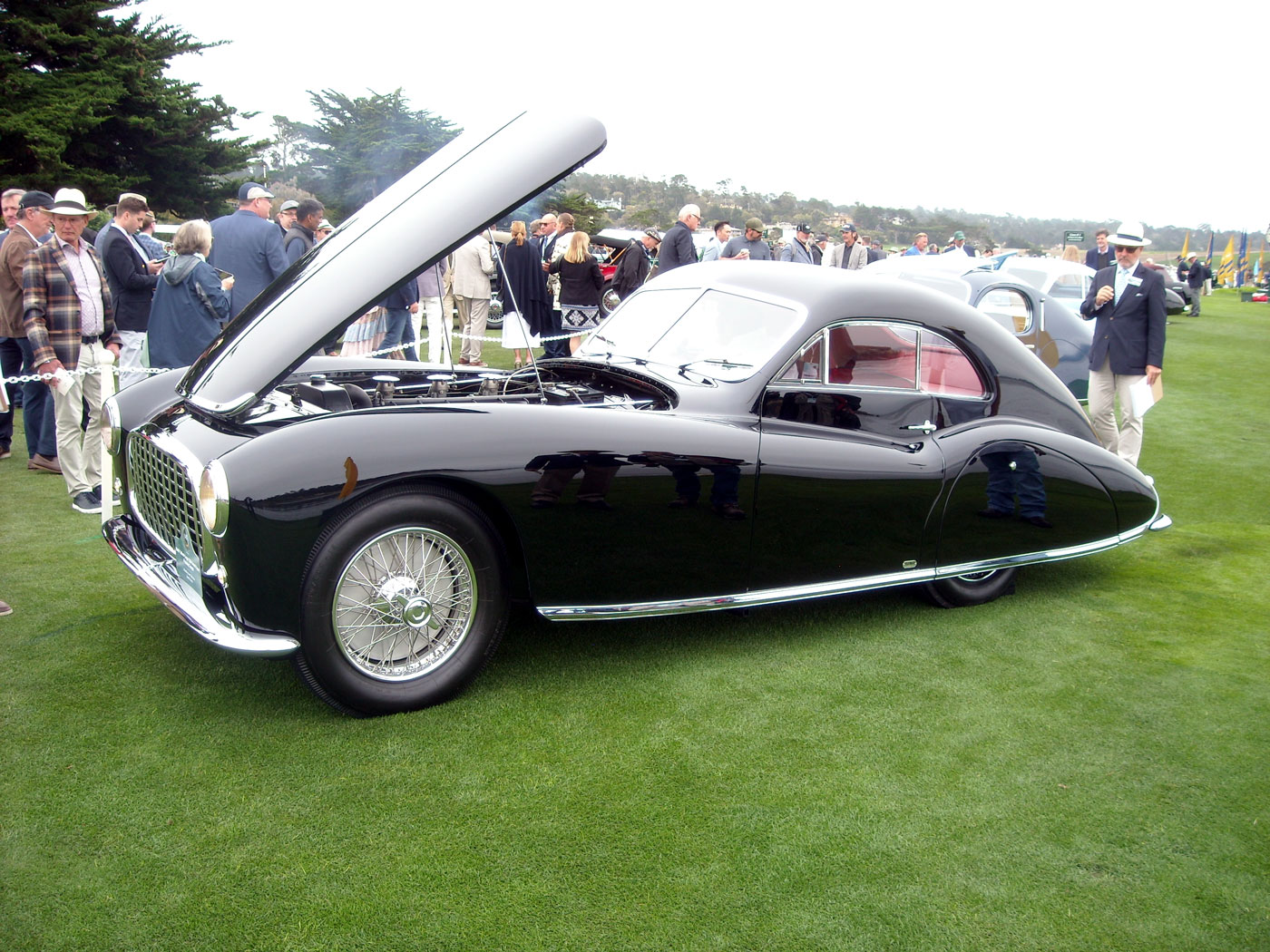
The same thing occurred with the similar Franay convertible, 110121; an accident, then Bingo, a Ferrari. Like many of the Grand Sports, it came to the U.S. and was eventually found and restored by Steve Cortinovis circa 1988.
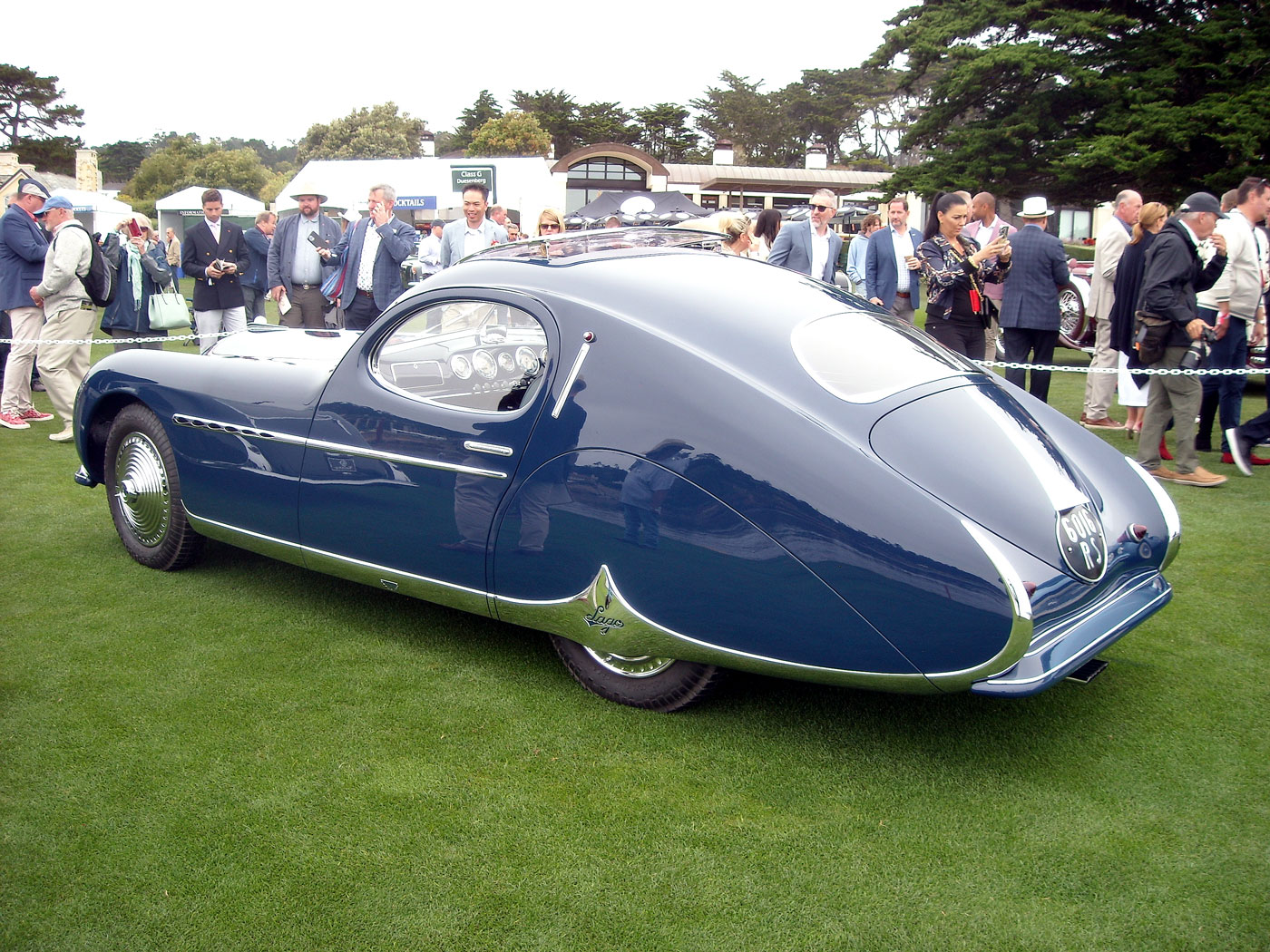
110103 1948 Figoni fastback coupe, Robert Kudela, Dhropyne, Czech Republic. Not a good day for Figoni, whose attempt to incorporate flashy, swoopy lines into a modern post war shape fell far short of the astounding prewar teardrop design that graced the T150 SS.
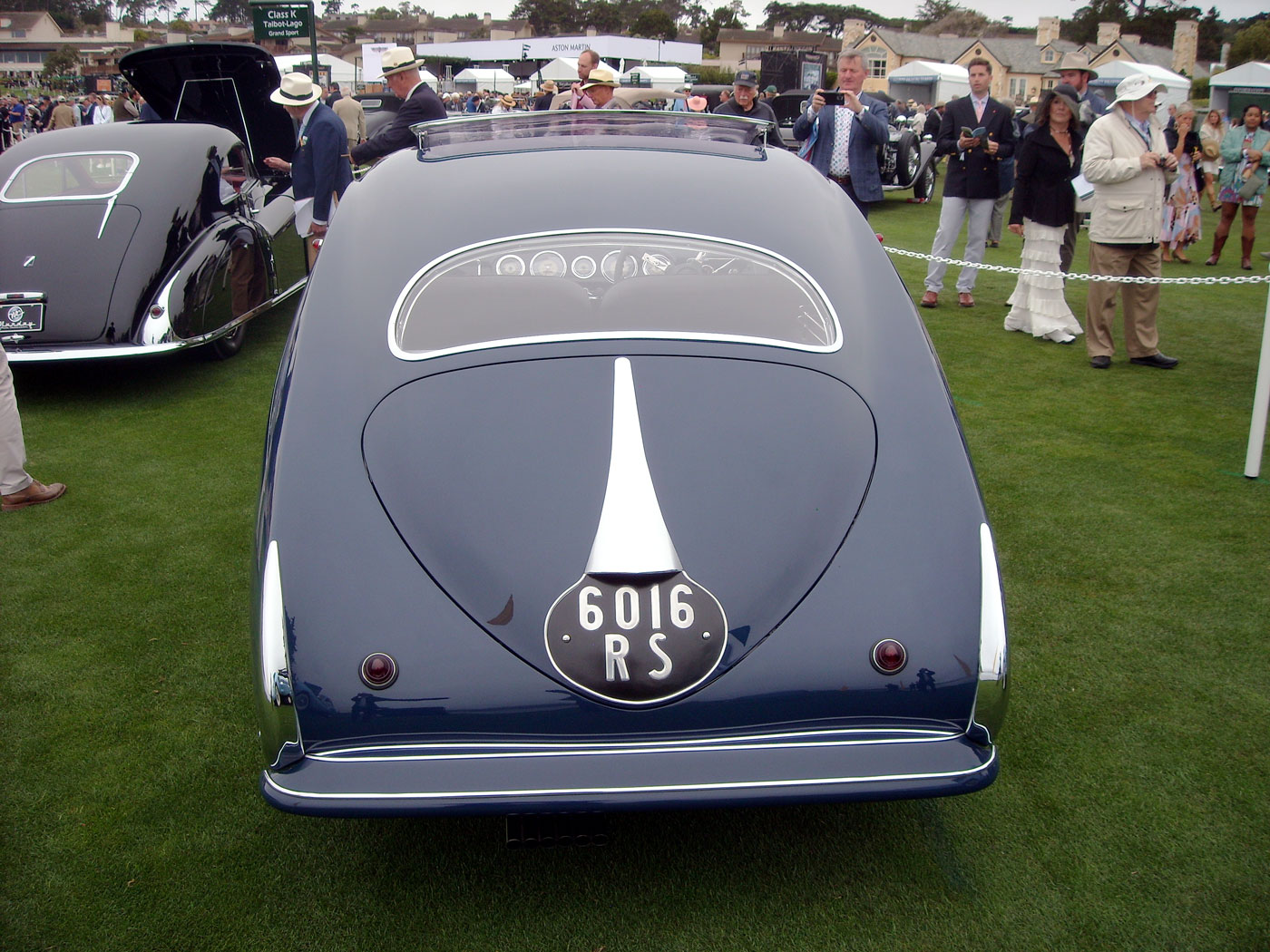
This one and only was found and saved by well-known Talbot Lago collector Lindley Locke of LA, who didn’t restore it but salted it away for 50 years. After his death, his widow, Betty Locke commissioned a restoration to be ready for the 2013 Pebble Beach event.
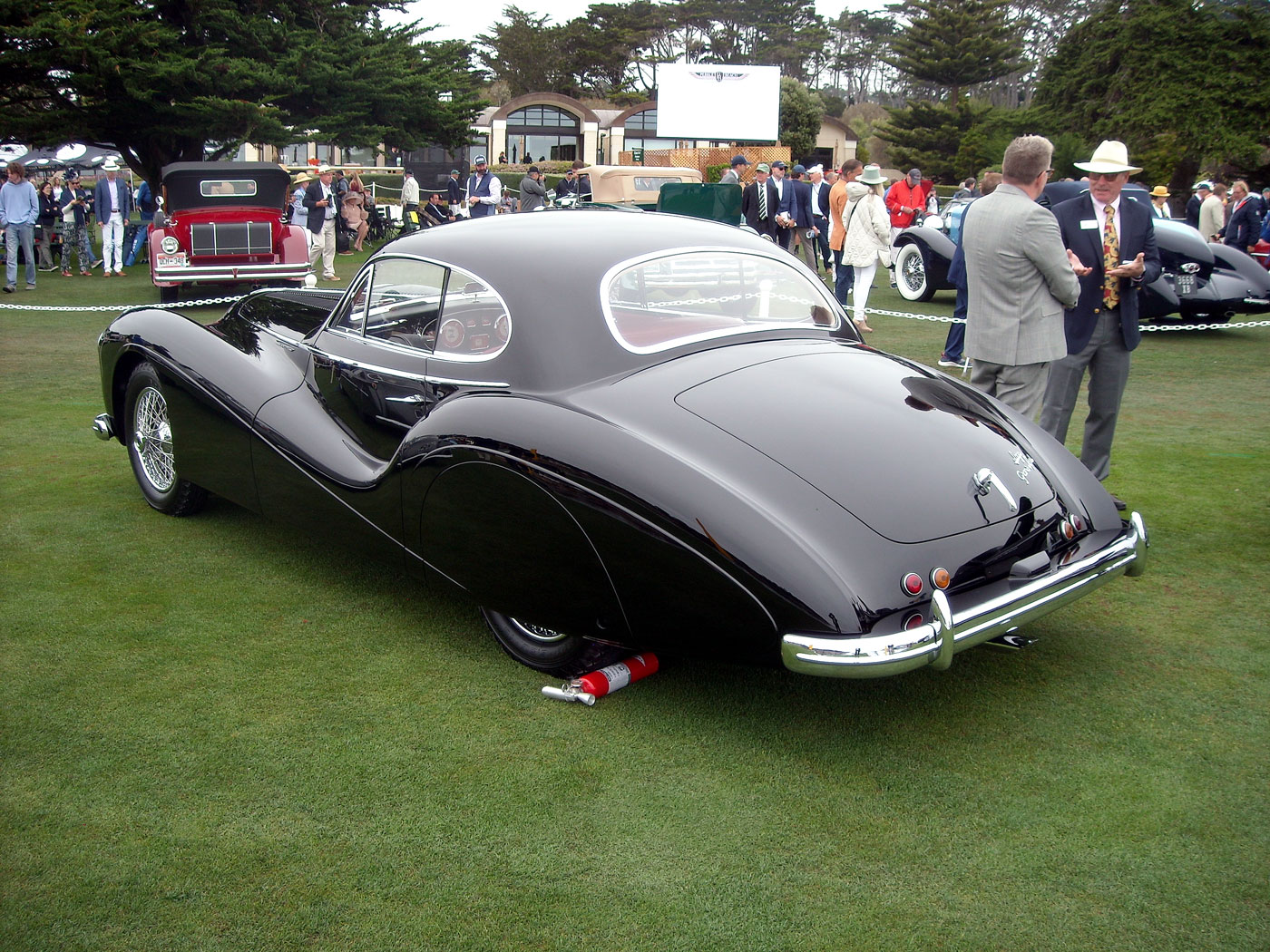
110156 1951 Saoutchik coupe, CMG Classics, San Ramon, CA. Saoutchik built bodies for six of the Grand Sports, and this one featured a notchback rather than the typical fastback. The last ten GS models had a longer wheelbase which enhanced proportions and must have made designers breathe a sigh of relief. Originally black, upon its arrival in California in the 1980s the notchback Saoutchik was painted in a red and black two tone scheme that was striking, but a bit over the top. In the hands of a new owner, it was apparently returned to the original black, and unlike the Mullin Farina, looks right in a dark color.
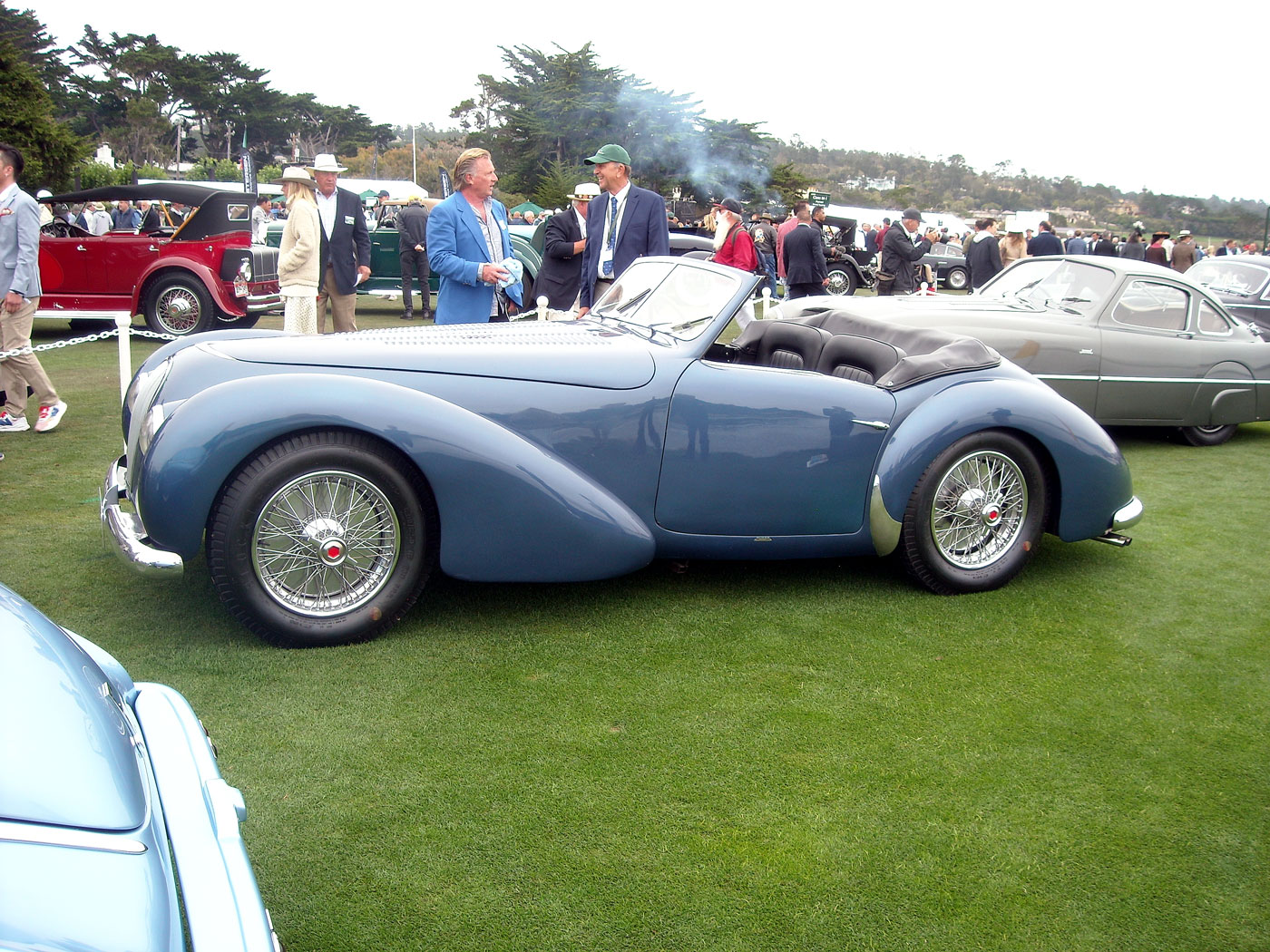
110117 1949 Dubos cabriolet, Michael Regalia, Sun Valley CA. While the 36-odd Grand Sport series produced a wide range of stunning coachwork, our choice for the nicest, cleanest and most well proportioned Grand Sport was this Dubos convertible, based very closely on a design by Carlos Delaisse. The Dubos is another GS that ended up with Lindley Locke, who had difficulties driving the car due to the proximity of the steering wheel and no seat adjustment. His wife Betty, however, had no problems and for years showed the essentially unrestored car in many events.
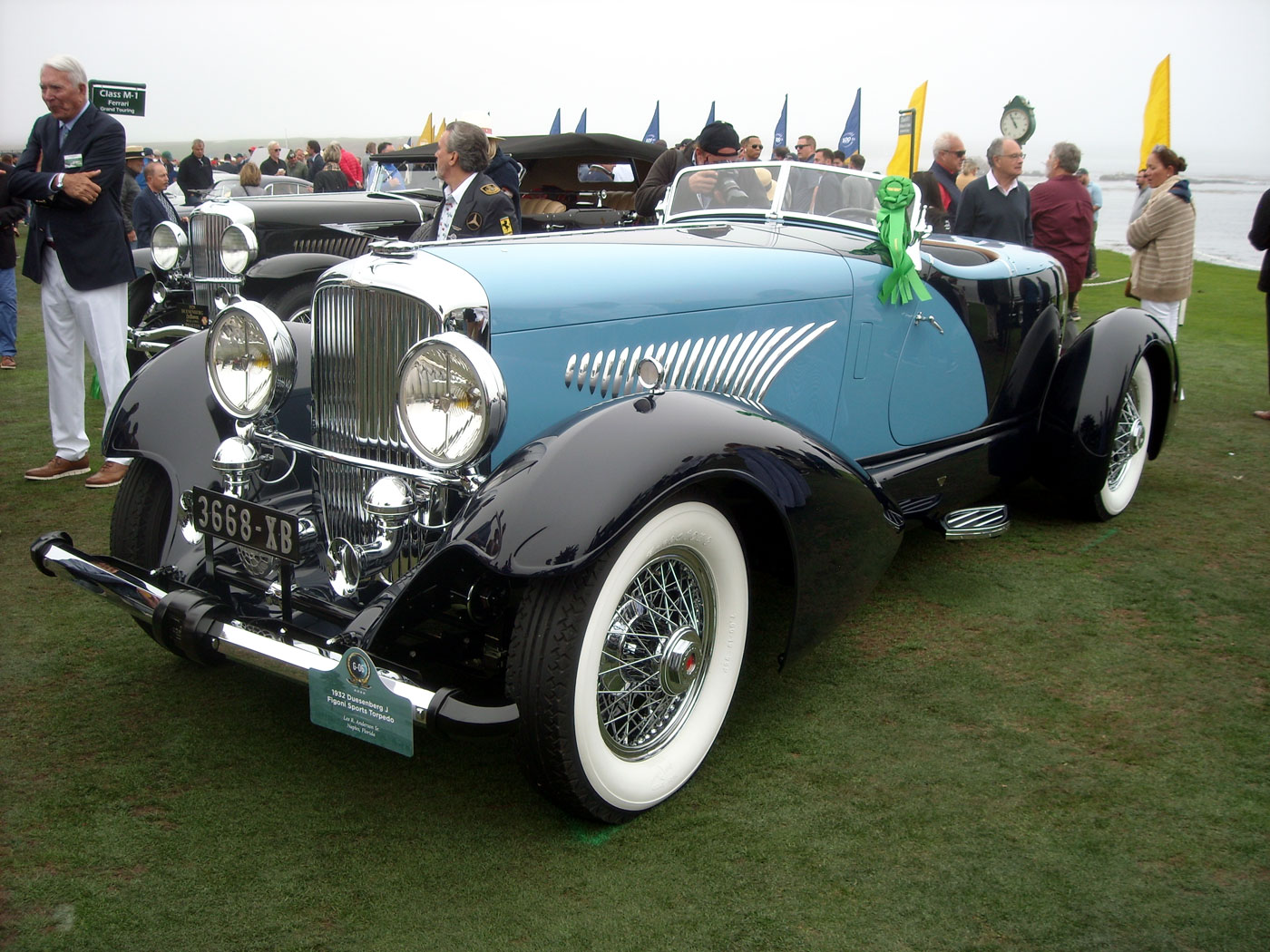
Fantastic article! I’ve attended several times, but never heard all these details! And the Talbot-Lago class was spectacular! Thank you Brandes!